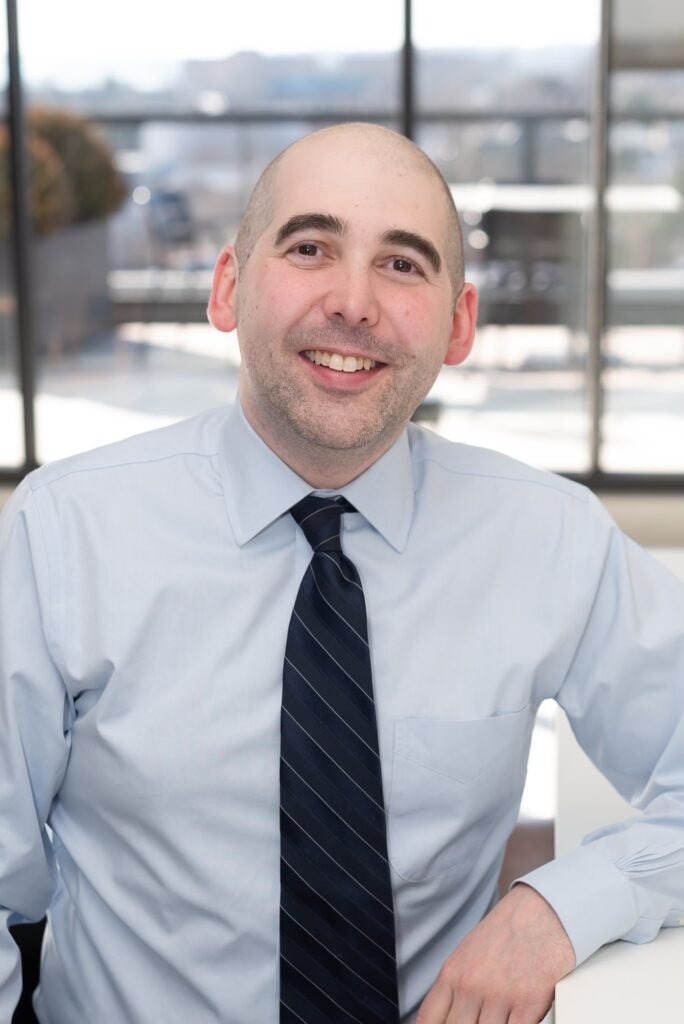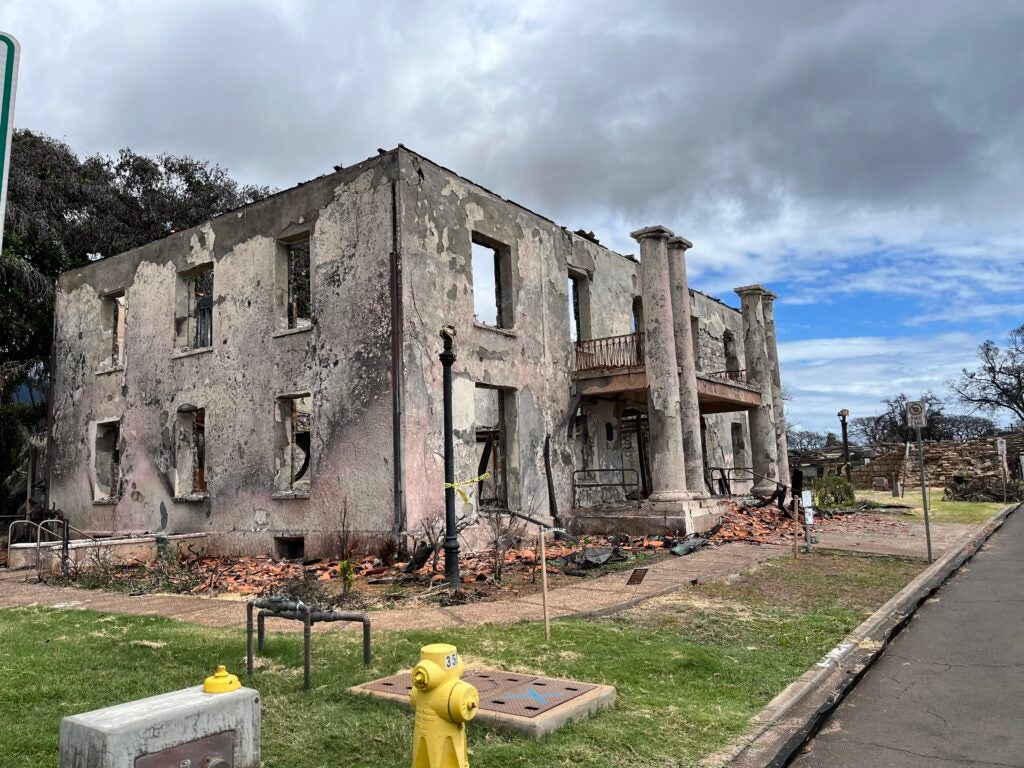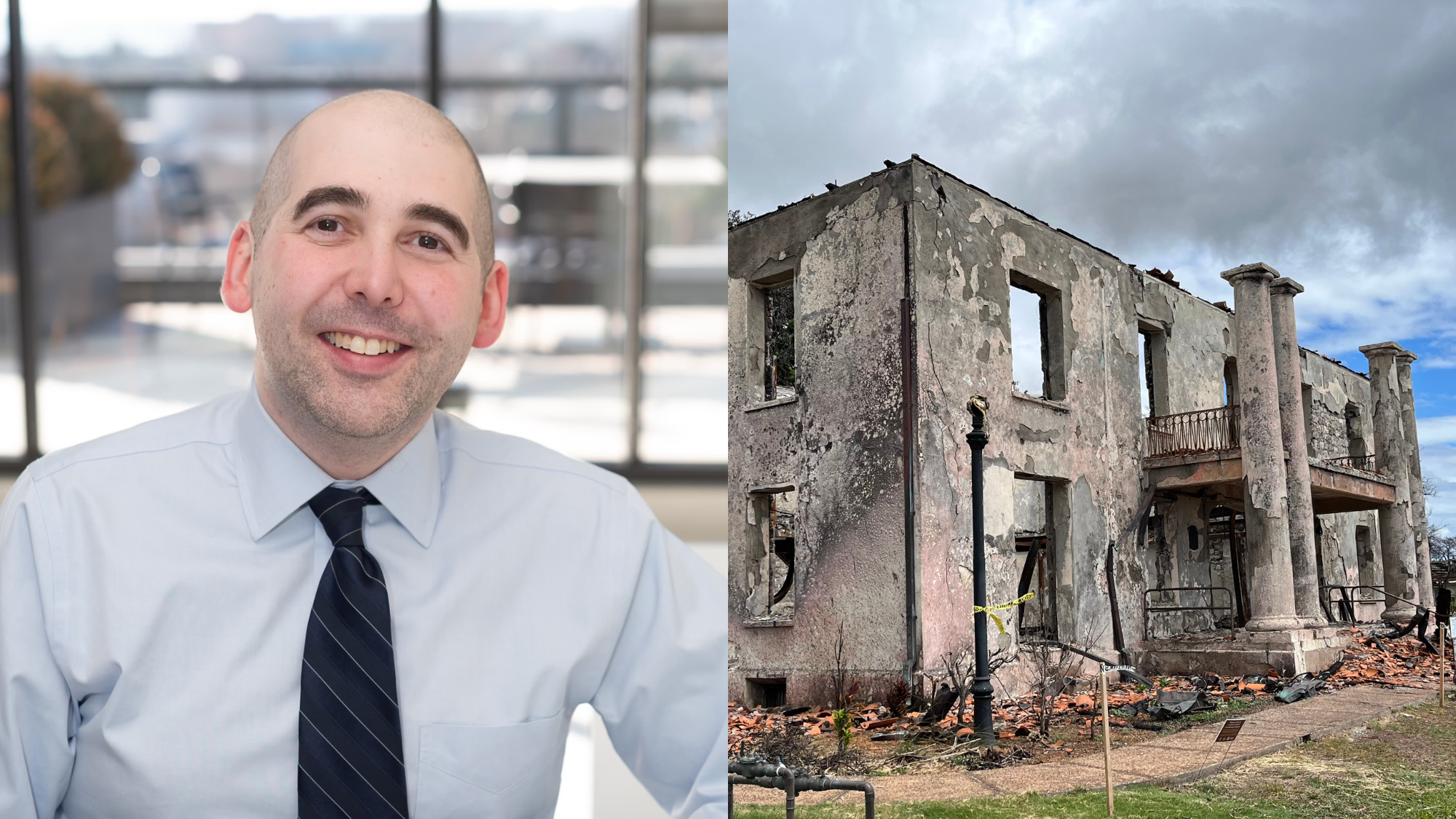Rebuilding and Restoring: An Executive MBA Student’s Research Into Preserving Cultural Heritage After Maui Wildfires
Adam Rogers (EMBA‘24) has always been fascinated by history – a personal passion that has become intertwined with his career. As a fire protection engineer, he is especially interested in protecting historic cultural sites from natural disasters.
In August 2023, Rogers was heartbroken by the deadly wildfires in Hawaii, a place that holds deep meaning to him. After enrolling in Georgetown McDonough’s Executive MBA (EMBA) program, Rogers knew he wanted to use his newfound knowledge to help the people of Lahaina, the cultural heart of Maui, recover.
The EMBA program’s Global Capstone Project gave Rogers the opportunity to do just that. The capstone integrates the EMBA curriculum with experiential, field research-based projects in a variety of locations around the world. Rogers’ project, “Lahaina Wildfire: Cultural Rebirth from Ashes,” explored the simultaneous processes of wildfire recovery and cultural heritage preservation to discuss how the people of Lahaina can build their town back with the foundations of the Hawaiian Kingdom intact.
Here, Rogers reflects on his experience traveling to Lahaina, working on his capstone project, and key lessons learned.
Why did you choose to work on a consulting project examining the intersection of cultural heritage preservation and disaster recovery in the aftermath of the Maui wildfires?

Adam Rogers (EMBA’24)
I started my career at the Smithsonian Institute where my love of history broadened into a passion for cultural heritage preservation. My mentor there, J. Andrew Wilson, is one of the preeminent advocates for fire protection of cultural heritage buildings and objects. I also sit on the National Fire Protection Association 909 committee, which addresses protections for cultural resource properties. Those and other experiences taught me how vulnerable our culture and history are and how sites around the world are in need of assistance. I became motivated to help save history and make a difference to preserve the artifacts and places that make up our collective past. When I started the EMBA program, I knew I wanted to use my existing knowledge and what I would learn to help in my way.
A few weeks into the program, I had already scraped together an idea about how to work with wooden palaces and temples in Asia. Then, the wildfire happened in Lahaina, Maui. My wife and I were married there in 2011 and have been back a few times since. It is gut-wrenching to see someplace that holds a special place in your heart destroyed in the way you have made it your career to prevent.
Months later, I saw a snippet in the news that the Smithsonian was sending the Smithsonian Cultural Rescue Initiative – essentially their version of FEMA – to assist. I started calling, emailing, and doing anything I could to get my foot in the door to go with them to Maui. I ultimately traveled with them and we worked with the Hawaii Museums Association, Department of Interior, FEMA, and other organizations to provide training, assess the damage to cultural sites and artifacts, and offer any assistance we could.
What are some of your key takeaways from traveling to Hawaii?
My first takeaway is the resiliency and kindness of the people there. They lost their homes, places of business, community, and more than 100 friends and family members. They were angry and felt a sense of loss, but they also were so strong and passionate about moving forward and saving what they could. At the same time, they were welcoming and warm to us even though we were walking through the devastation. They knew we were there to help and they treated us like old friends. Such positivity in the middle of despair was nothing short of awe-inspiring.

A photo from Rogers’ field research in Lahaina
How did the trip impact your understanding of global perspectives in business?
This project explores an interesting intersection of history, business, and the importance of field work. I went to Maui to help preserve cultural heritage and instruct on measures to improve fire protection when rebuilding, or in museums unaffected by the fire. I came back with a story and passion for how the tragedy can be used to the advantage of the people affected to restore their history and heritage. Additionally, I learned there is no substitute for getting involved on a personal basis and talking to people. Reports, records, and accounts can tell a story, but you can’t truly understand the whole picture until you talk to the people involved and understand their culture and values.
What was your favorite moment of the trip?
At the end of our workshop day, various attendees from cultural sites and museums across Hawaii talked to me and asked questions. They were grateful, kind, and eager to learn what they could do in their specific and unique circumstances. More or less, they all warmly invited me to see their museum or site in the future. It was rewarding to know not only had I helped them but they actively wanted to know more. Often in my profession, I have to force or scare people into taking preventive action. The people of Hawaii continue to amaze me with every visit, and it was my great privilege to help them protect their history and culture in at least some small part.
What advice would you offer to future EMBA students about this experience?
Look for organizations and people who really need help, specifically museums and cultural sites. The majority of museums or sites that are not national parks or largely government-supported are run by people who may not have a solid understanding of broader business practices. They struggle with grants, donations, trusts, and/or admissions without knowing any other way. The application of the breadth of knowledge an EMBA student or group has to a unique nonprofit, such as a small museum, could have a major impact. However, most of these sites don’t know that they could ask for help or even what to ask. Also, let your passion drive your Global Capstone Project – consider what you feel strongly about and you can create a project that you are proud of and excited by.
- Tagged
- Executive MBA
